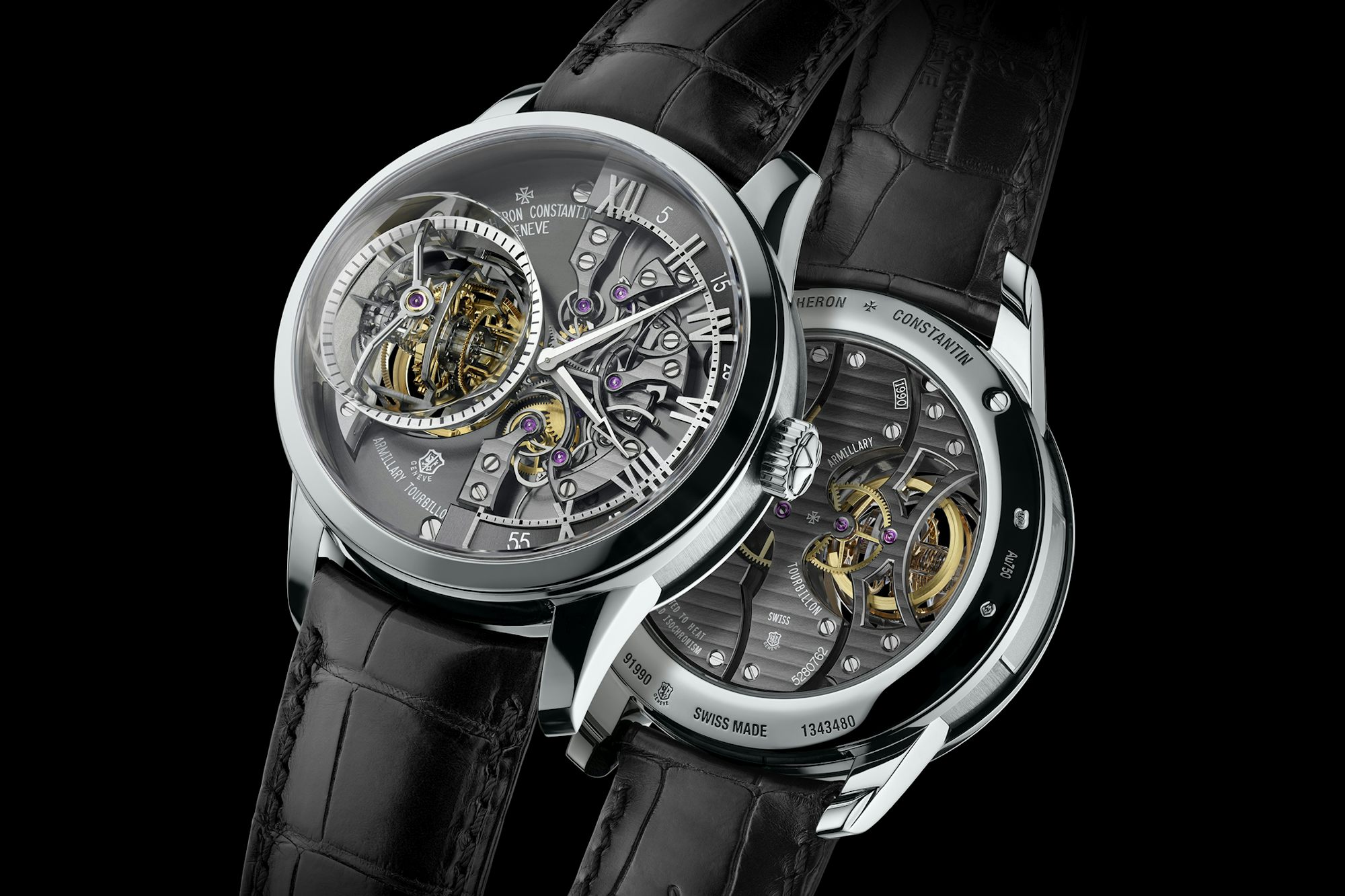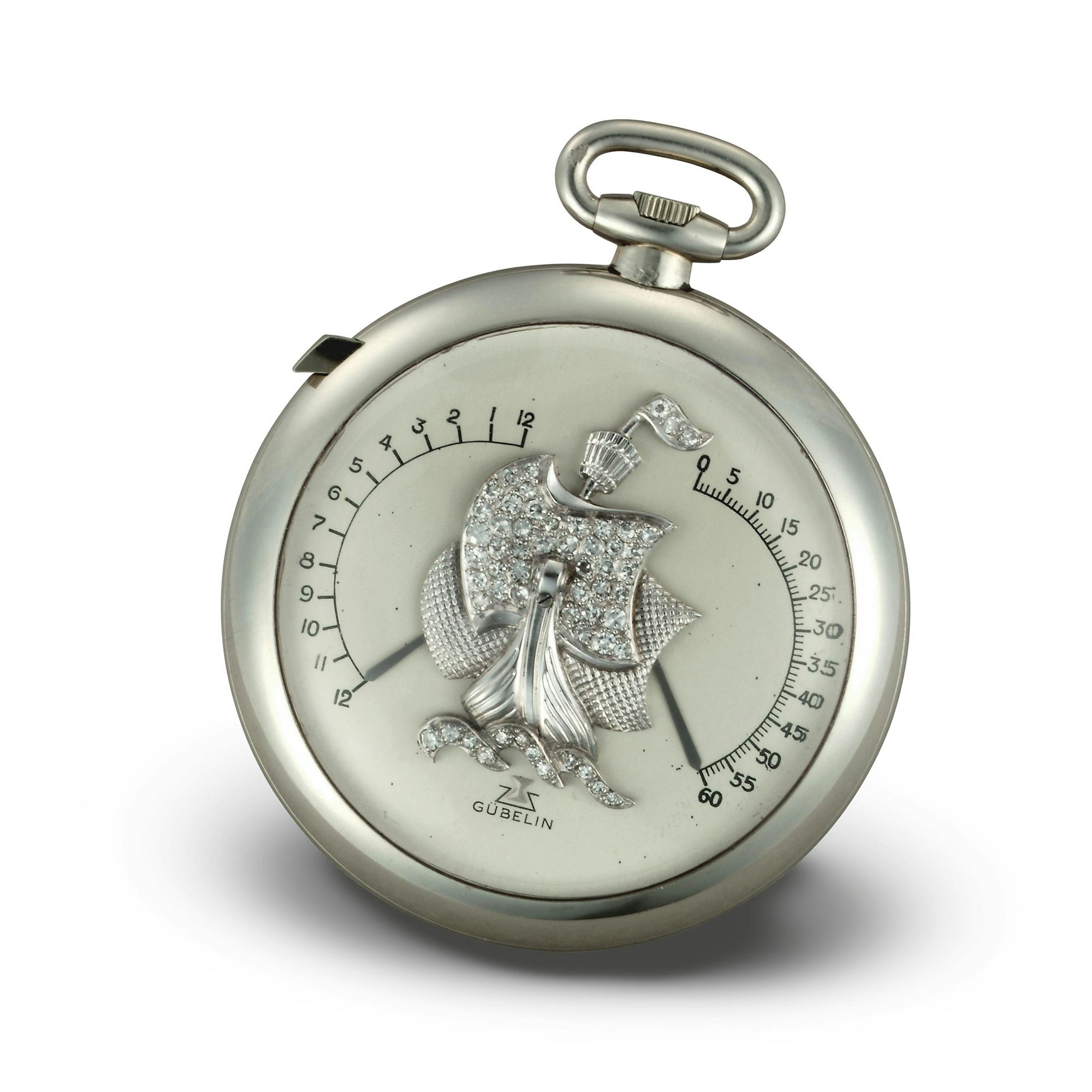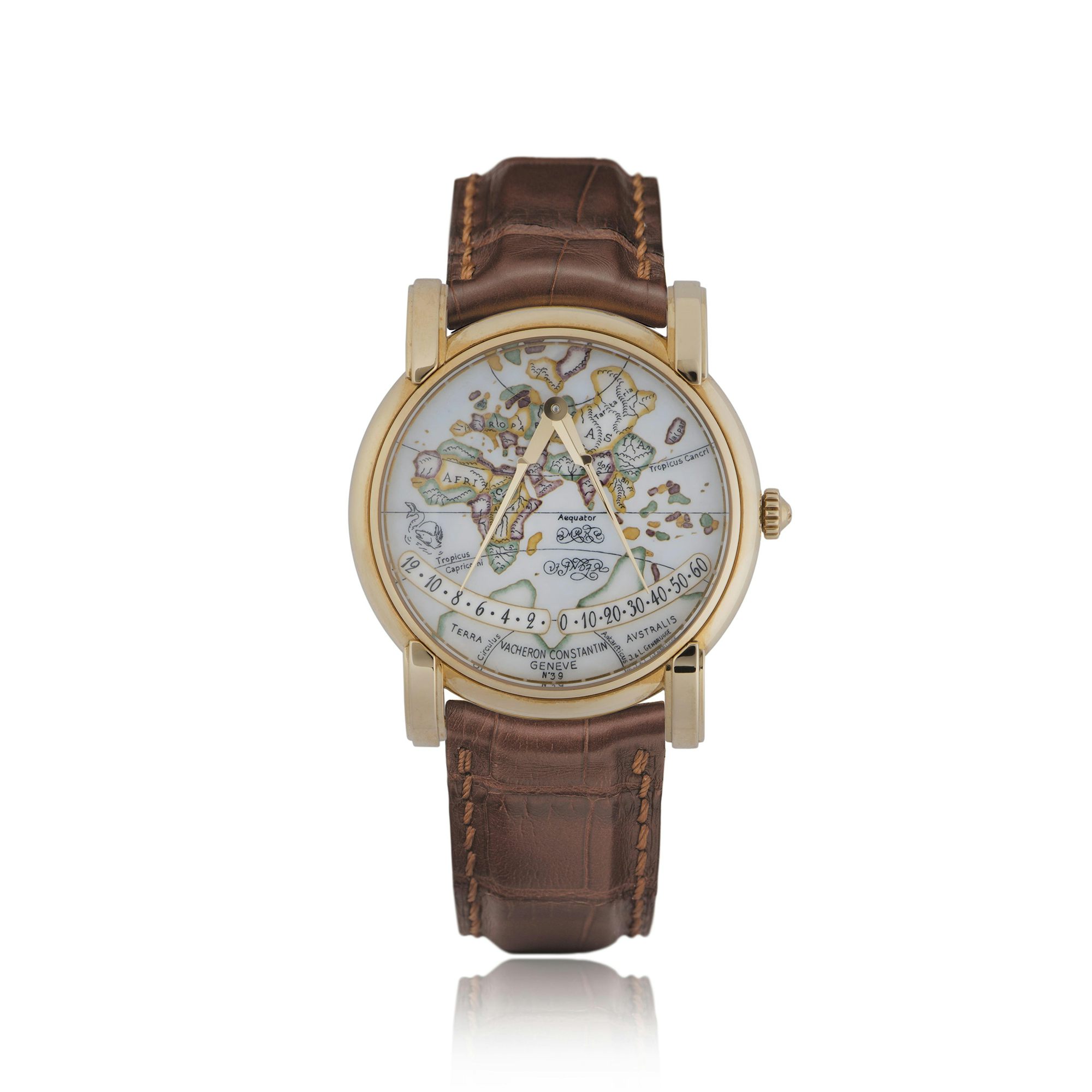
What We Know
Today marks the day before Vacheron Constantin’s 270th birthday, which the brand celebrates annually on September 17, the same day that Jean-Marc Vacheron signed his first apprentice at his Cabinotier workshop, expanding from a solo craftsman to a full-fledged business. The brand has hyped this up as a big year, and they didn’t disappoint on their birthday, announcing two massively complicated new creations. The first is an automaton clock called La Quête du Temps, which we’ve covered in another article. The second is this 20-piece limited edition double-retrograde “arms in the air” astronomical wristwatch inspired by the clock, the Métiers d’Art “Tribute to the Quest of Time.”

The inspiration behind the La Quête du Temps clock becomes immediately apparent when you see the images. The dial side is centered around a three-dimensional human figure, crafted in titanium with a golden PVD treatment, which is then sandblasted and given a hand-patinated finish.
The figure’s arms function as a dual-retrograde display showing hours on the left, rendered with Roman numerals, and minutes on the right in Arabic numerals. This time-telling display sits on two white gold tracks with an opaline finish that contrasts beautifully against the blue fumé double sapphire dial, offering a clear view of the movement beneath.

In fact, the blue dial is more than just an effect—it is a storytelling aspect made of two layers of sapphire crystal. On the underside of the top crystal, the blue gradient effect serves as a backdrop for an illustration of the constellations as seen from Geneva on the day the Maison was founded in 1755. This mirrors the sky chart dome on the Le Quête du Tempe clock, which uses the same date for its constellations.
This sky chart and blue gradient are created by metallisation, while the Vacheron Constantin logo is transfer-printed in golden powder, with the power reserve indications transfer-printed in white. The second sapphire layer of the dial is fixed beneath the first to protect the decoration from any form of damage.
Retrograde displays are something of a signature for Vacheron. Below, you can see the 2016 Les Cabinotiers Retrograde Armillary Tourbillon, which was technically inspired, in part, by the 2015 release of the 57260 (then the most complicated watch in the world). There are also the Mercator watches, featuring Métier d’Art dials, which incorporate a double retrograde display. The more appropriate comparison, however, is the “arms in the air” pocket watches from the 1930s, including “La Caravelle,” shown below, which held the time “in reserve” until a button was pressed to snap the hands into the correct position.

Vacheron Constantin’s Les Cabinotiers Retrograde Armillary Tourbillon from 2016.

A 1937 ‘La Caravelle’ pocket watch with double retrograde display.

A Vacheron Constantin “Mercator” watch from 1994.
For this watch, you can choose to have the time display set to “always on” or “on demand,” and the constant movement and force of moving the arms is minimized by the use of titanium for the figure. The dial side also features a dual power reserve at the bottom of the dial. The caliber 3670 (the subject of four patent applications) features a six-day power reserve, which is displayed across two subdials: one running from 6 to 3, and the other from 3 to 0. This split display is one of the brand’s patent applications, balancing the dial harmony across the center of the watch.
On the rear is a second dial for astronomical complications. This sapphire dial, featuring a blue sapphire disc underneath, displays a sky chart that shows the sidereal day and tracks the constellations in real time, accurate to within one day of variation over 9,130 years.

Back to the dial side once more for a last set of complications. Spinning above the head of the figure, keeping the time, is a spherical precision 3D moon made of titanium, hand-engraved and polished. Now, it might be difficult to track the phase of the moon if the moon were done in a single color, so instead, one side is finished with a golden PVD treatment, and the “dark” side is finished with a deep blue PVD treatment. Around the edge of the moon phase is a ring that shows the age of the moon in days, both rotating together on their own separate axis.

Finally, you might notice, if you look carefully, that the movement is not finished with traditional Côtes de Genève or even the brand’s recent Côtes Unique but rather subtly circular-grained to improve legibility against the sapphire dials. The brand told me that traditional Geneva stripes would have been too distracting, with their patterns of contrast clashing with the complex dial.

Other pertinent facts about the watch include the fact that the movement runs at 5Hz, or 36,000 bph, which signals the brand’s return to a tempo that I most closely associate with their Twin Beat Perpetual Calendar (which, frankly, is quite a cool watch itself). The case is made in 18k white gold and measures 43mm by 13.58mm. It is limited to 20 pieces, and despite requests, the brand is not sharing the price.
What We Think
I was very lucky to see the recently completed sample in advance, just a few weeks ago, as I was at Vacheron Constantin’s headquarters filming something incredibly fascinating that I’m eager to share in a little while. In the process, I actually got to handle the “La Caravelle” show above and spend some time with this watch as well. While these “arms in the air” watches (as they are known) are quite cool, the force at which the hands pop up and down is a bit jarring, especially on the older watches.

Even the impact on the new Tribute to the Quest of Time is somewhat intense, but this is factored into the watch’s function and the use of titanium for the feature. Vacheron has figured out how to minimize the impact on the movement while still having the very snappy return of the retrograde hands at the top of the hour (including a designed but barely-perceptible bounce on the arms). However, the brand has taken it even further. One of the patents is for synchronizing the retrograde displays, which are normally affected by the hour and minute hands progressing at different speeds. With the new patent-applied-for mechanism, at 11:59, when the two hands return to 00:00 or 12:00, they arrive at the same time.

Finally, if you don’t like the view of the dial to remind you of the Vitruvian Man come to life, you can put the watch in standby mode. While in standby, the timekeeping function still runs in the background, but the arms of the figure stay at their “neutral” down position until manually activated by a pusher at 10 o’clock. The figure will then show the time until the pusher is depressed again. You can also set the time in standby mode without risking damage to the movement, granted, you won’t be able to see the time that you’re setting. All in all, it’s a great bit of engineering that is maybe even more successful as a storytelling device for the brand’s 270th Anniversary.
The Basics
Brand: Vacheron Constantin
Model: Métiers d’Art ‘Tribute to the Quest of Time’
Diameter: 43mm
Thickness: 13.58mm
Case Material: White gold
Dial Color: Double sapphire dial with blue fumé treatment; three-dimensional titanium figure with golden treatment and with sandblasted patina finish; titanium 3D precision moon, hand-engraved and with PVD treatment
Indexes: Applied and printed
Water Resistance: 30m
Strap/Bracelet: Dark blue alligator leather with alligator lining, hand-stitched with gold thread, 18K white gold folding clasp

The dial side of the Calibre 3670.

The movement side of the Calibre 3670.
The Movement
Caliber: Calibre 3670
Functions: Double retrograde hours and minutes in continuous ‘display’ and ‘standby’ mode or on demand; 3D precision moon phase and age of the moon; Sky chart; Sidereal day; Double retrograde power reserve
Diameter: 34mm
Thickness: 7.8mm
Power Reserve: 144 hours
Winding: Manual
Frequency: 36,000 vph
Jewels: 55
Chronometer Certified: No
Additional Details: Four patent applications, two modes of time display, a celestial vault that reproduces the position of the constellations in the Geneva sky on 17 September 1755, the day of Vacheron Constantin’s founding
Pricing & Availability
Price: On Request
Availability: Now
Limited Edition: Limited to 20 pieces
For more, click here.

